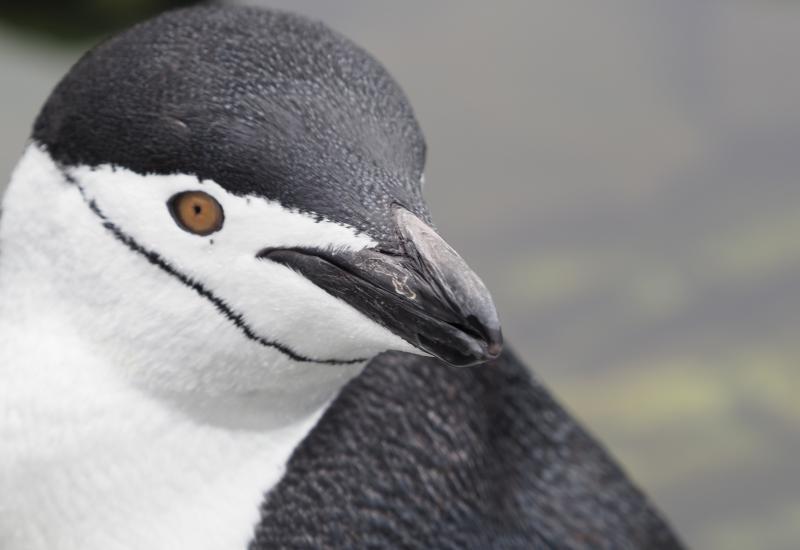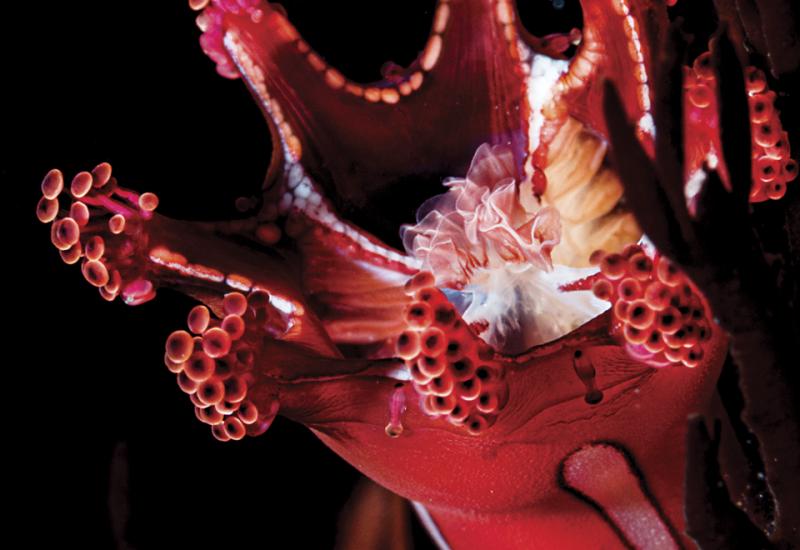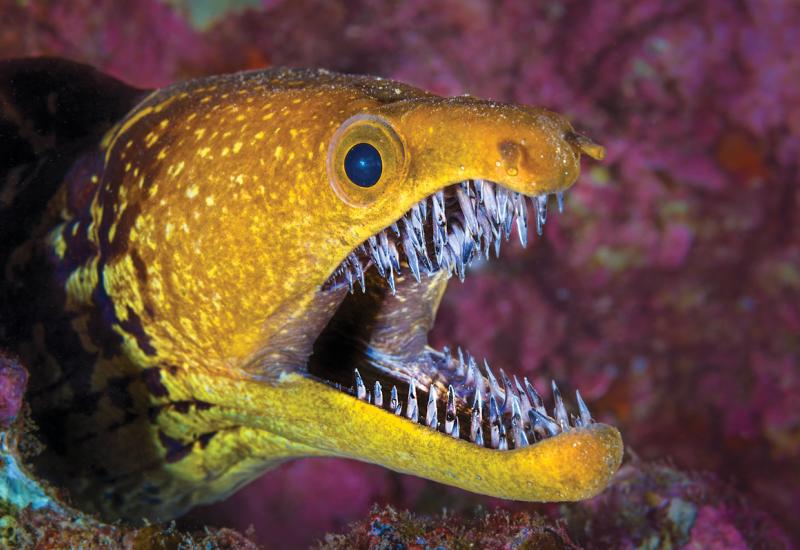Photo Gallery: Where in the World is Wallace?
The first time I had the opportunity to dive in Indonesia, I was pretty much gobsmacked by the incredible diversity of creatures that could be seen on every dive — some of which are very bizarre critters indeed.
Indonesia enjoys a very robust (some might even say epic) marine biodiversity. There are far more species of fish, crustaceans, cephalopods, nudibranchs (as well as many other fascinating photo subjects) there than anywhere else in the world where I have been diving.

This staggering biodiversity is partially explained by the ‘Wallace Line’ — an imaginary boundary first identified by Alfred Wallace, a British explorer and naturalist, back in the mid 1800s, when any theory of evolution was considered heresy. Like his contemporary, Charles Darwin, Wallace also was fascinated by bio-geography. His line was later adjusted, but still defines an area where different ocean currents (and tectonic plates) meet and produce a massive population of cool stuff.
Dividing Asian and Australian ecosystems, the Wallace Line delineates very different and distinct fauna that exists on either side of it. On land, most species do not cross over the line, but in the ocean, several species have apparently intermingled, and the result is an interesting array of hybrid species.
I hope you enjoy this gallery of weird and wonderful critters. All images were captured in Indonesia — in or near ‘Wallacea’ — Wallace’s bio-geographic zone.
More from Judy G
Meeting Mr. Big | Cold Water Rocks | Critters of Cozumel | Indonesia's Komodo National Park
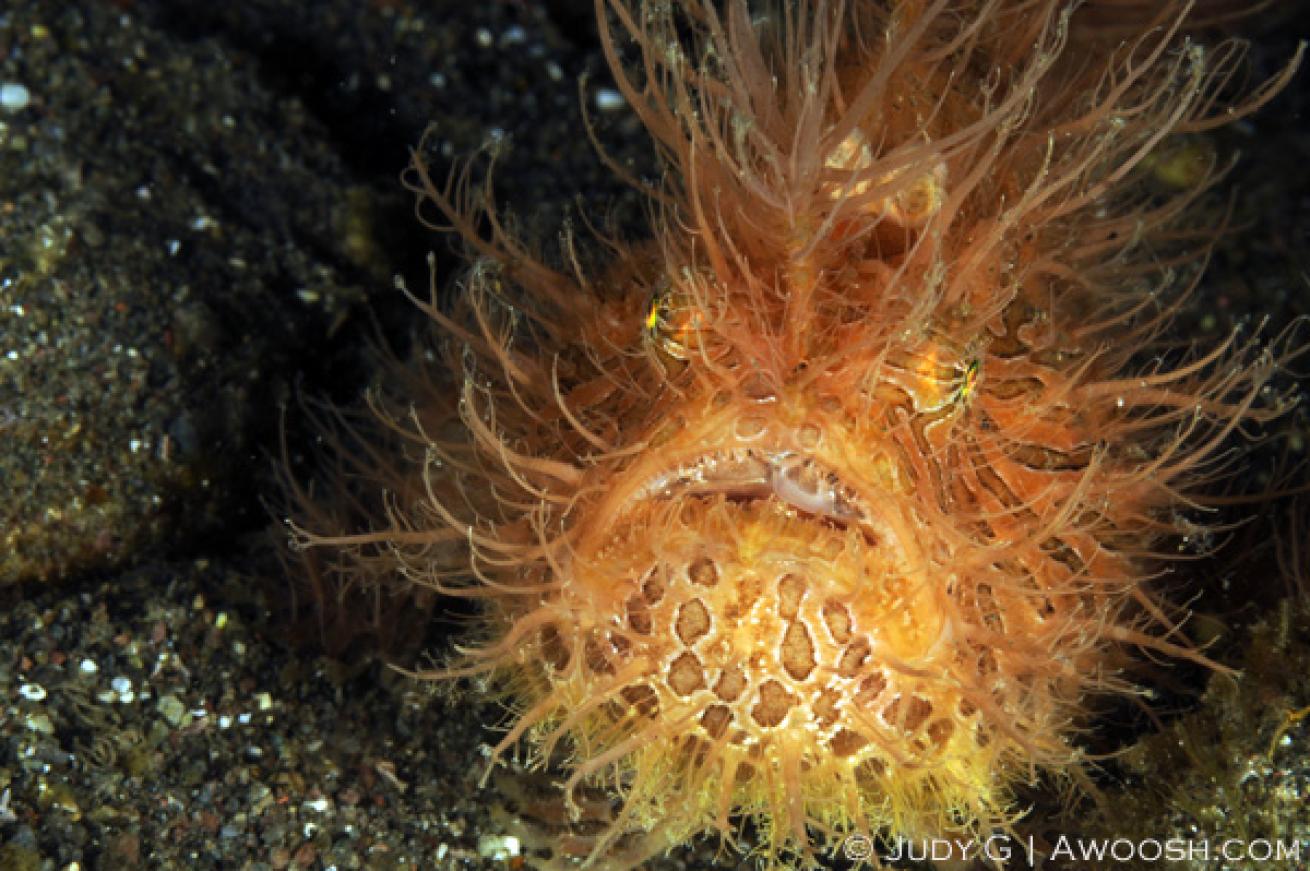
Judy G
It doesn’t get much weirder than this! There are many species of frogfish in Indonesia, including Giant Frogfish in a variety of colors (including the impossible-to-photograph black version), but this little hairy customer is something else. This image was captured on a night dive in southern Komodo. It was about 5 inches in length.
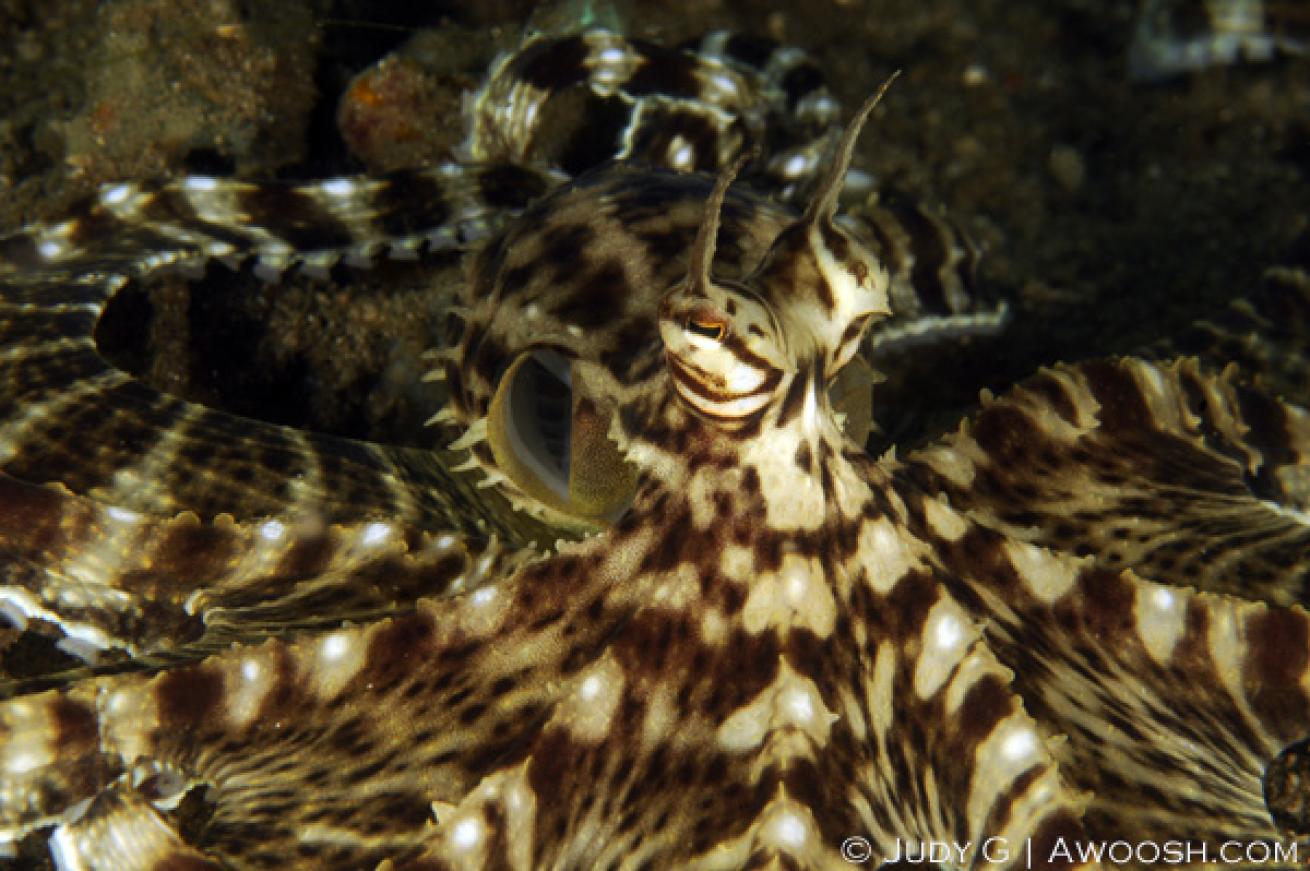
Judy G
This fascinating octopus (among many fascinating varieties of octopus, squid and cuttlefish that can be found in Indonesia) is a shape shifter. It is a fairly reclusive animal that tends to burrow down in sandy bottoms with just its head poking up. When out on the reef it can change shape and color to look like other sea creatures — most often when I have seen them do this, they mimic (quite convincingly) a flounder.
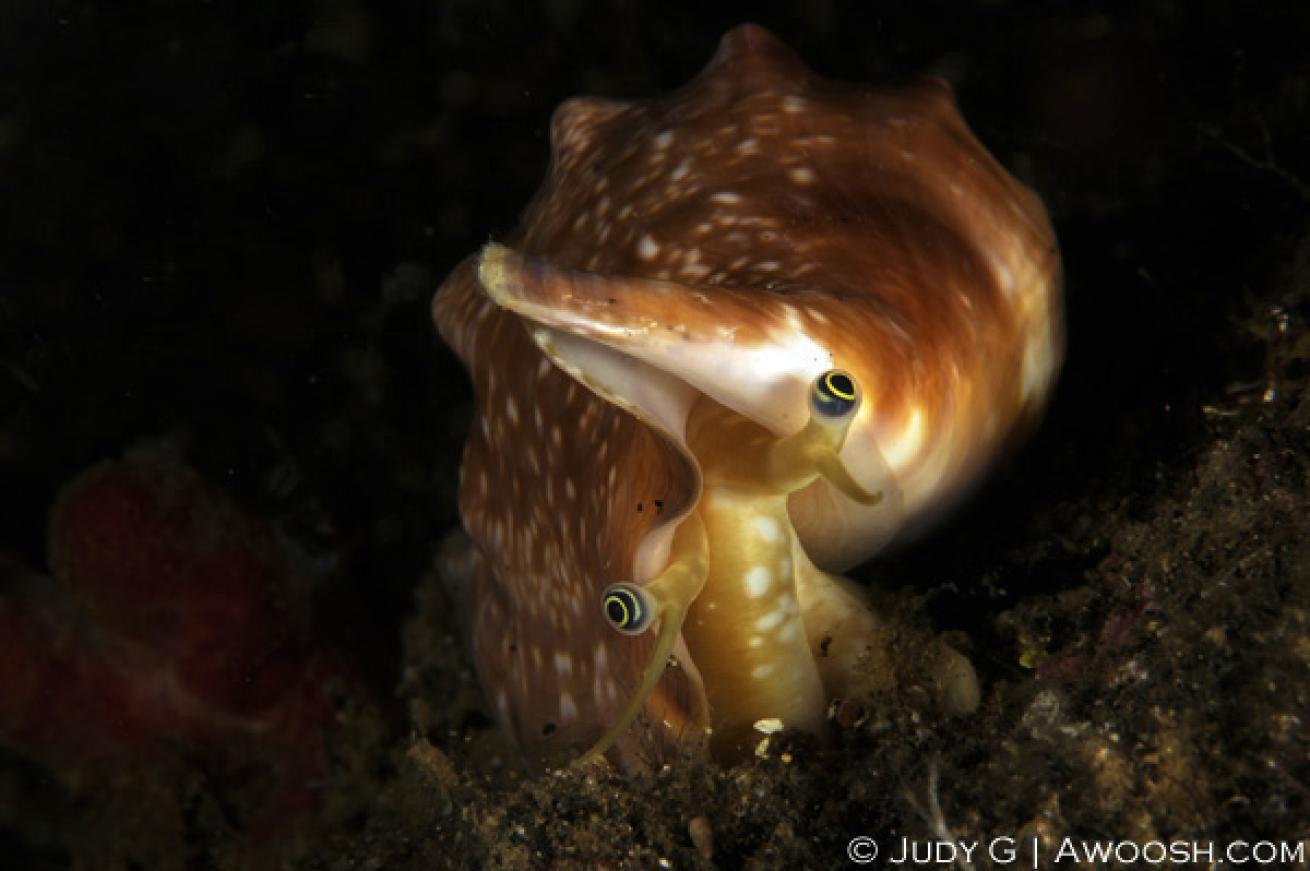
Judy G
The eyes have it! This strange little conch was cruising around the reef on a night dive when spotted. It was about 3 inches in length.
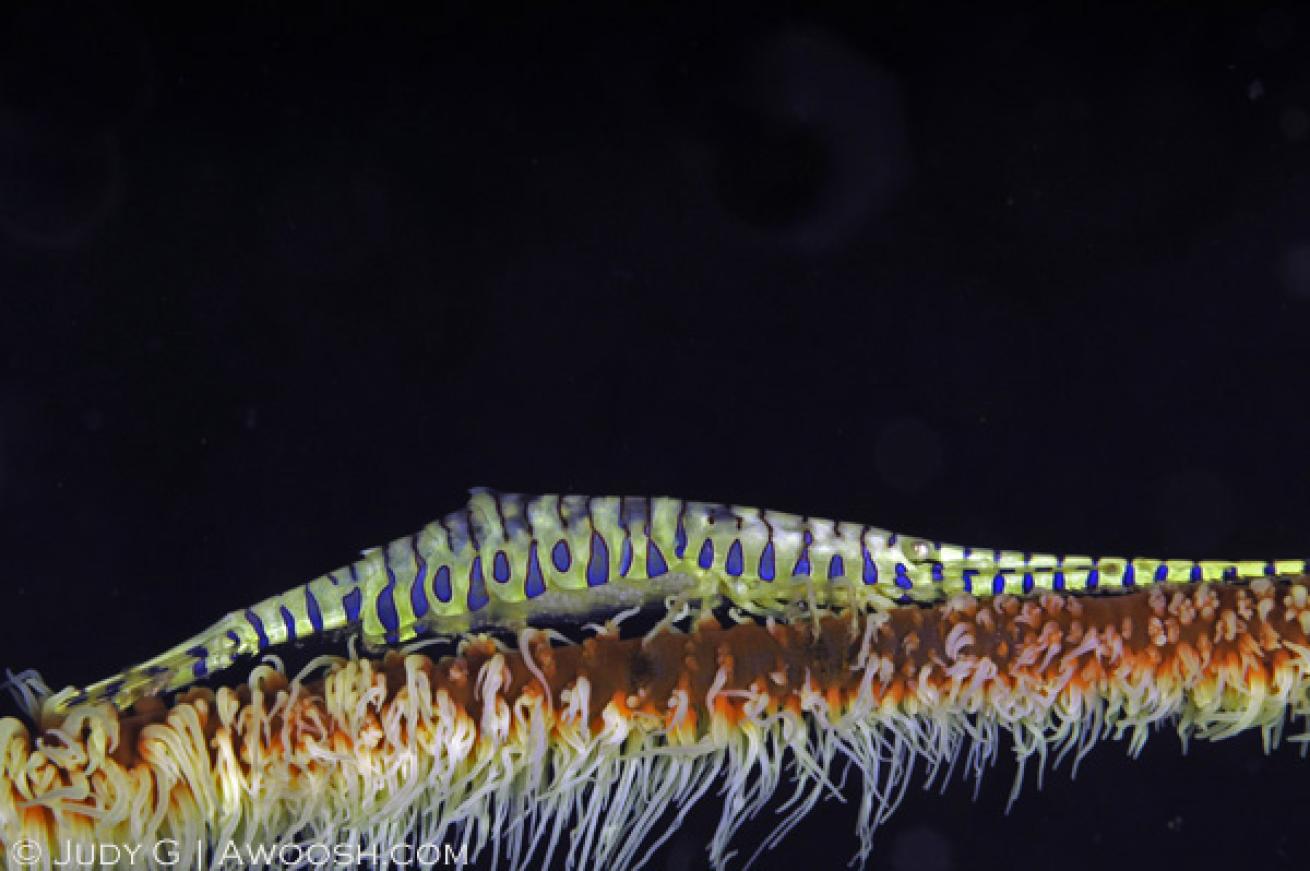
Judy G
This strange shrimp is just one of approximately 80 varieties of shrimp documented in Humann and DeLoach’s most-excellent Tropical Pacific Reef Creature Identification book. Seriously, that is a huge variety of shrimp, and many of them are found in Indonesia. This strange shrimp has a needle-nosed rostrum, and its habitat is on coral whips and black corals. I’ve only seen one, and so I was thrilled to get this shot.
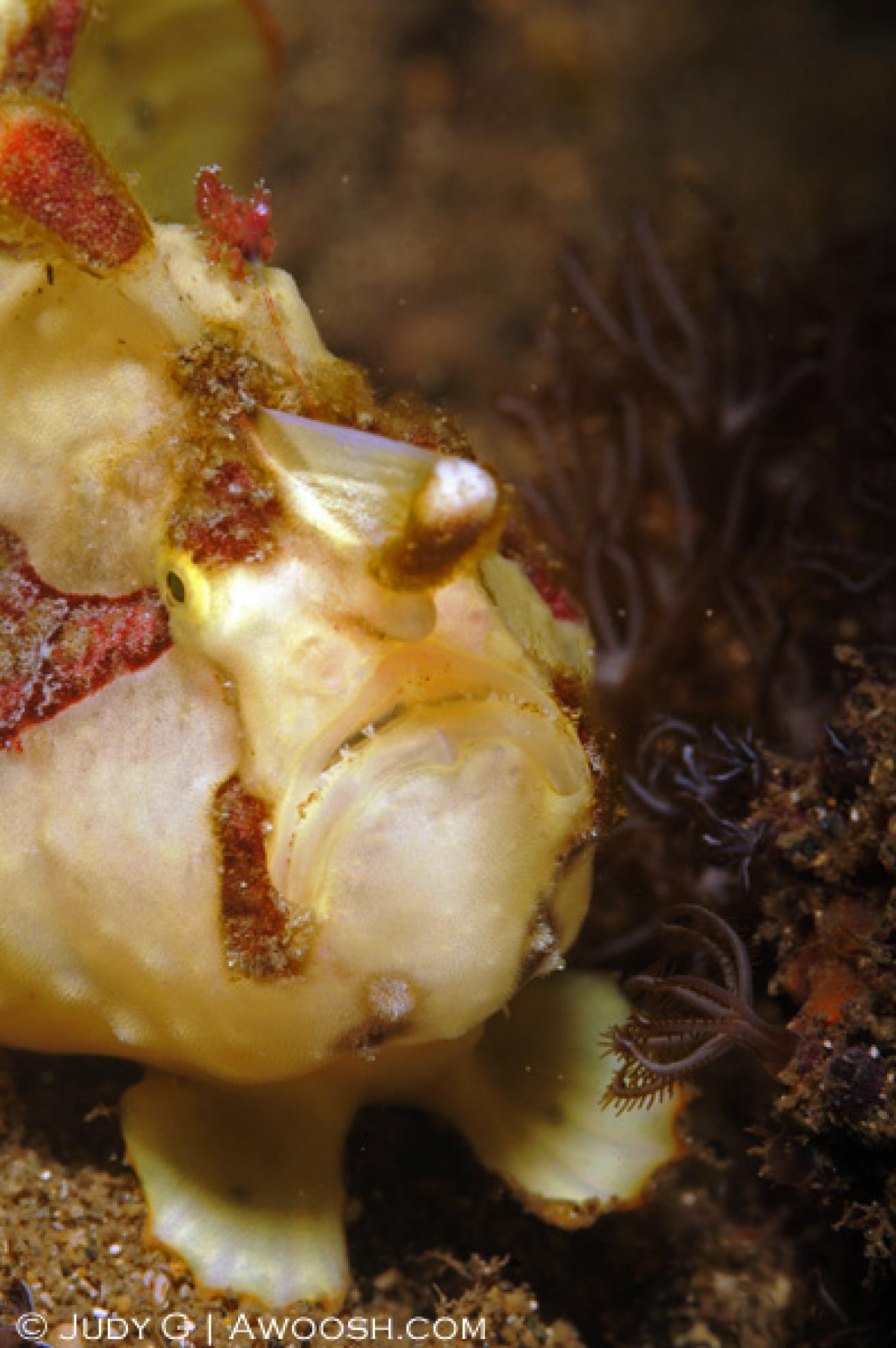
Judy G
When confirming the identification for this funny little frogfish, I couldn’t decide whether it was a warty or a painted — but went with warty due to the small bumps on its chin. Frogfish are fascinating bottom-dwelling creatures, which typically move by ‘walking’ on the bottom, but will swim if startled. This one was out for a stroll on the muck flats of Bima Harbour, on the island of Sumbawa.
Many types of frogfish have little 'lures’ — small appendages that they deploy from their foreheads, with which they attract small fish. Then ‘wham’ — they strike and consume their prey with lightning speed. Frogfish also ‘yawn’ — it is a funny sight as they have huge, cavernous mouths, but I haven’t been lucky enough to capture one mid-yawn with my camera. I’ll admit that I am not a very patient photographer…
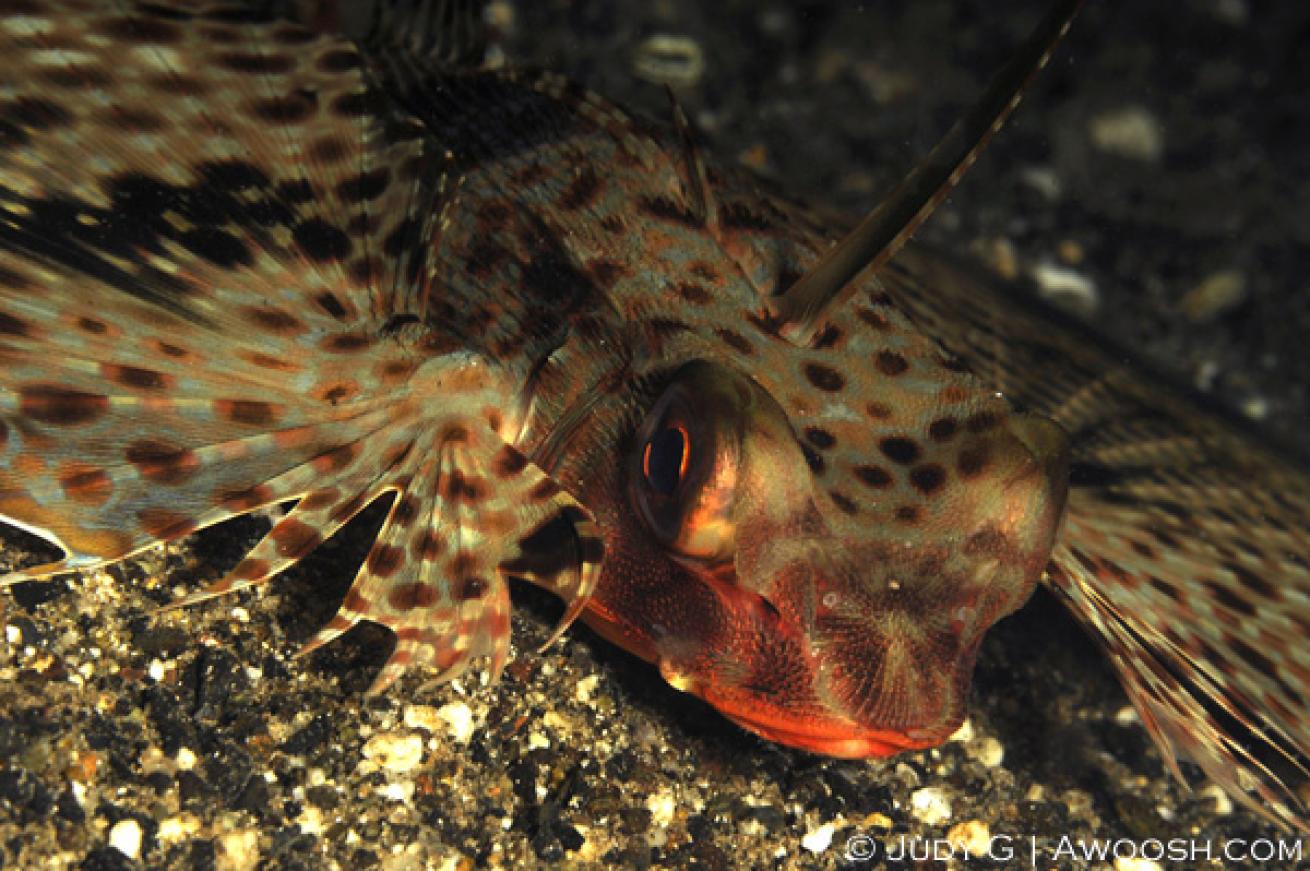
Judy G
Is it a bird, or a fish? The Helmut Gunard has massive, wing-like pectoral fins, but it is known to creep along sandy bottoms on two leg-like front appendages, rather than swim. I’ve only ever seen this variety of fish on night dives, and they can be perplexing to photograph as they like to turn away from the camera, and are easily annoyed enough to swim away. I got lucky on this one.
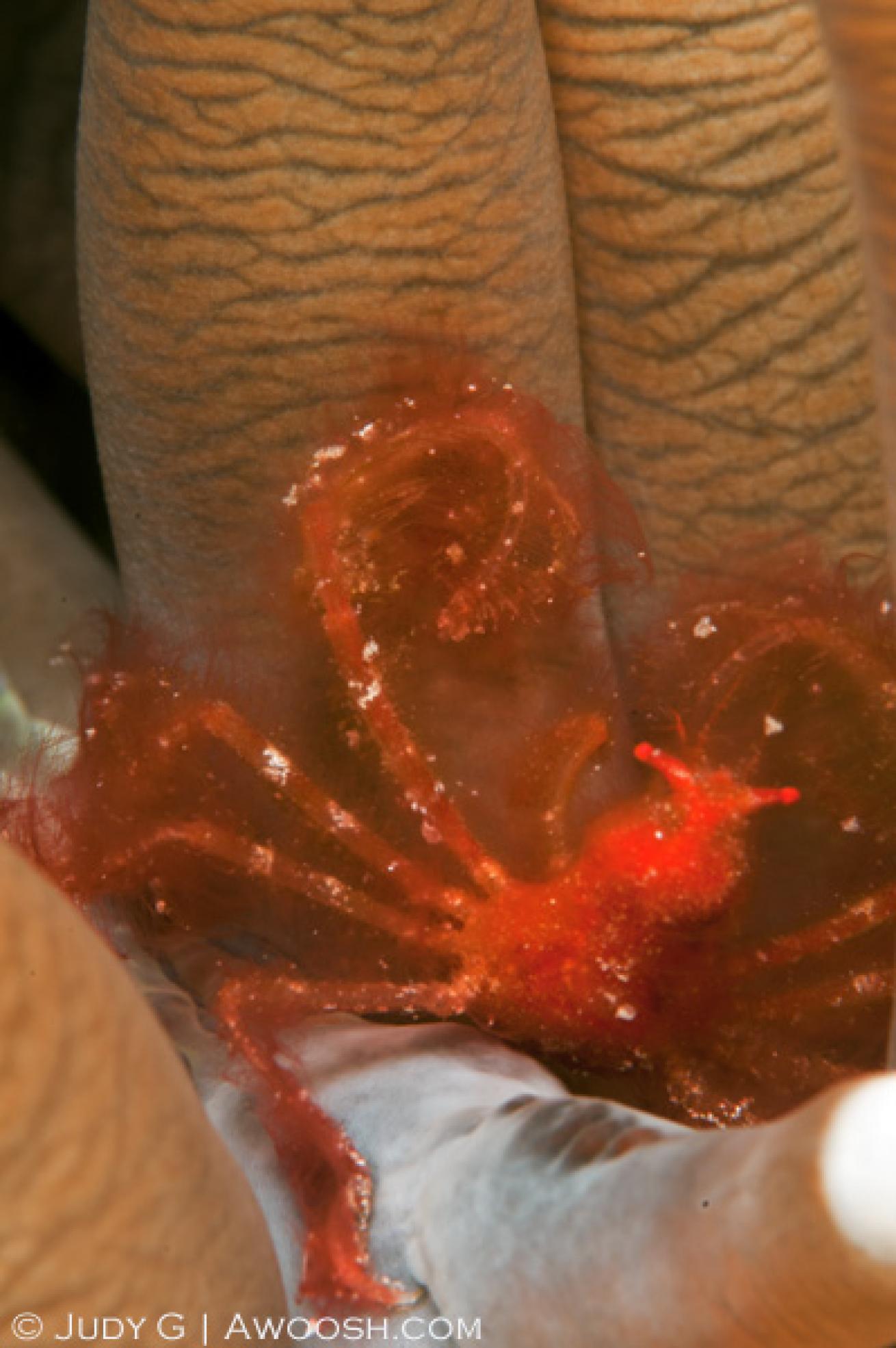
Judy G
OK, crabs are generally pretty weird creatures, but check out this Chewbacca version. These little crabs are most often spotted on bubble corals, but I’ve also seen them on mushroom corals — which was where this one was photographed, off of southeastern Sulawesi in Indonesia. There are a staggering variety of crabs in the Indo Pacific — more than 100 distinct types are catalogued in the Humann and DeLoach book!
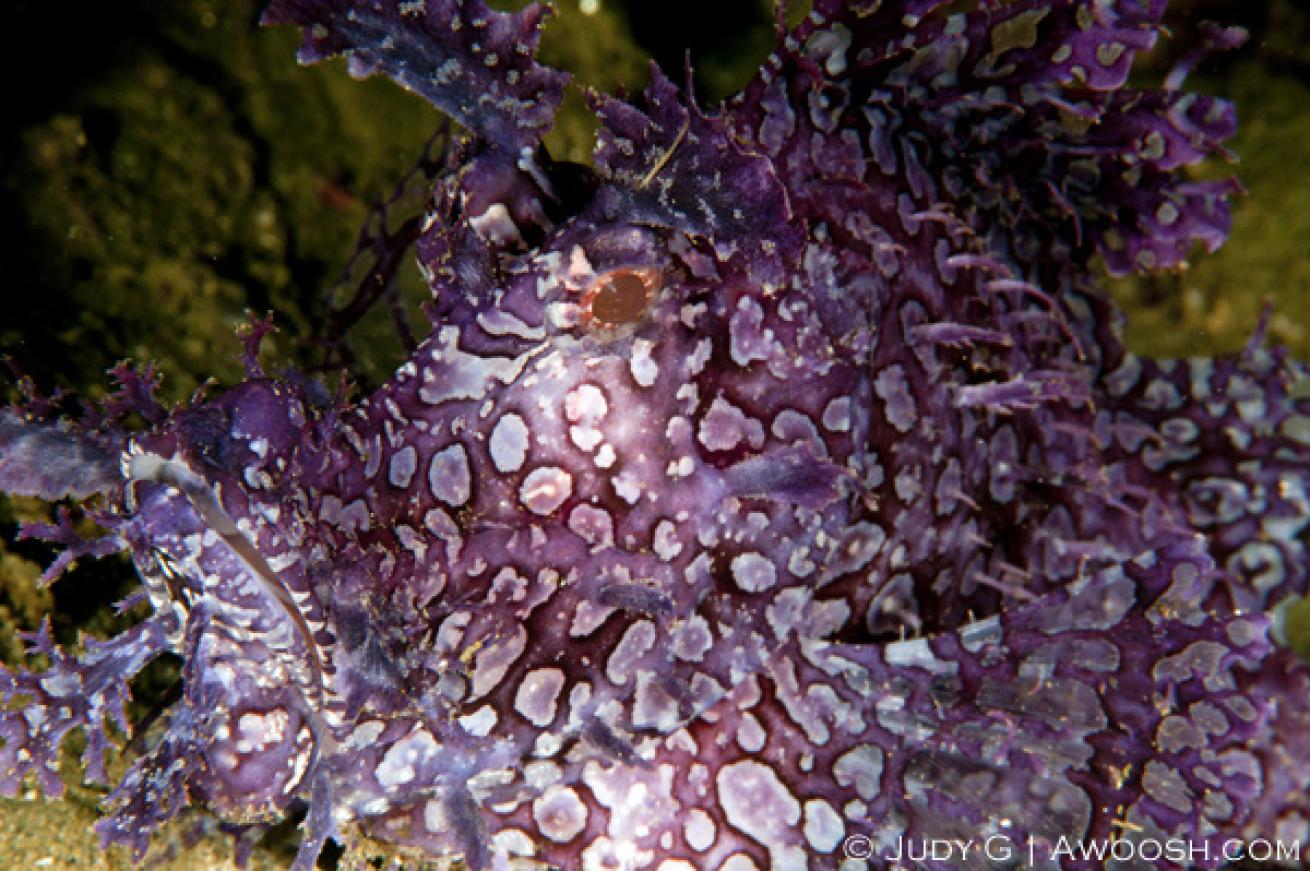
Judy G
This fish had been on my wish list for many years before I finally got to see one. And to make it even more special, on the same dive (!) I also saw (and photographed) a pale pink Paddle-Flap Rhinopias. Both of these fish look to me like something Dr. Seuss would have created. This one appeared quite muted as it rested on a sandy bottom (fairly deep — about 75 feet) until it was lit by my strobes, and then it popped in purple! It was about 8 inches in length.
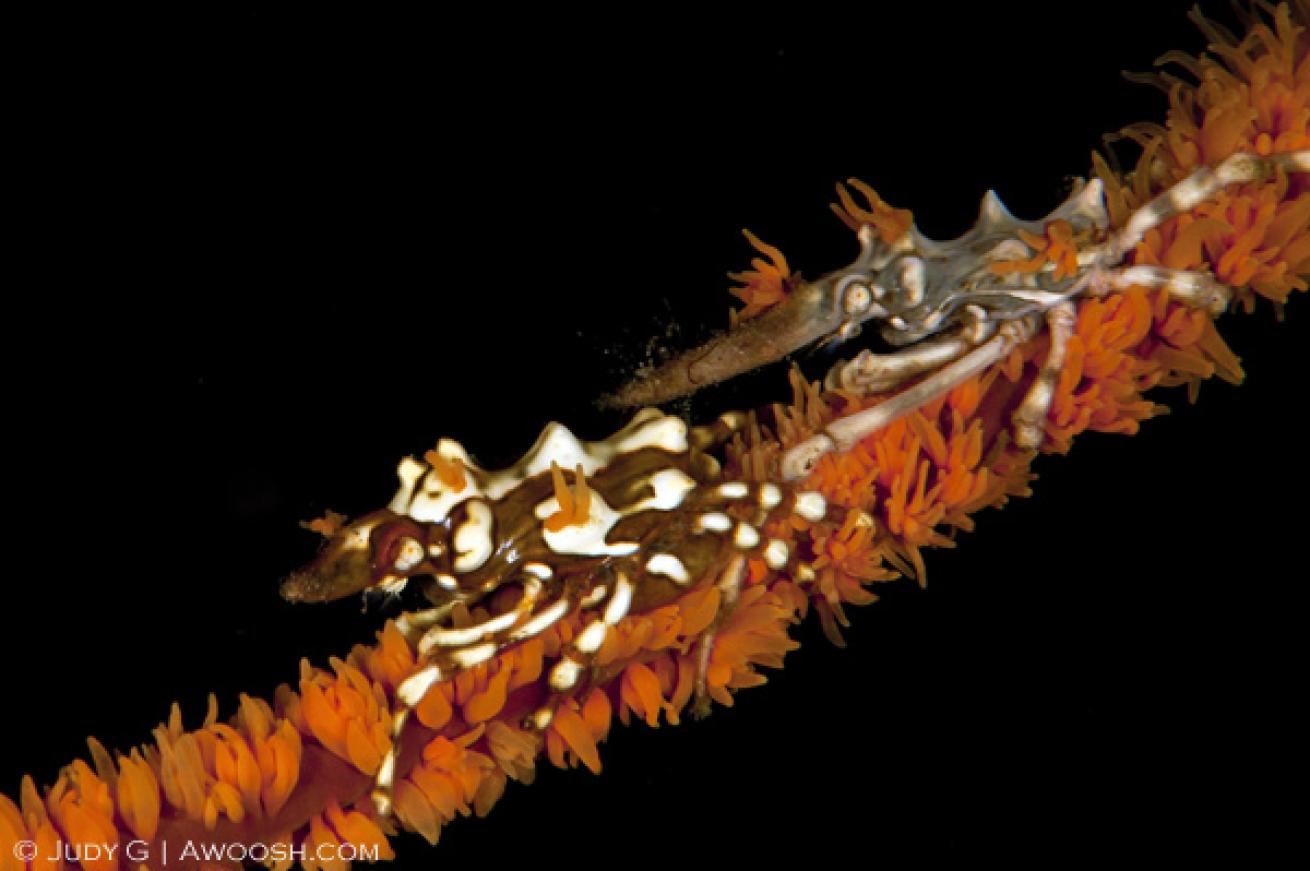
Judy G
These are quite tiny crabs, which, as their name suggests, live on wire corals. In Indonesia it is worth having a close look on many of these whip-like corals that spring out of the reef, as often there will be a wire coral crab, shrimp or whip coral goby living on it. In current, it can be very challenging to photograph any of these little creatures (these crabs are about half-an-inch long), as the wire corals tend to move about quite freely in the breeze.
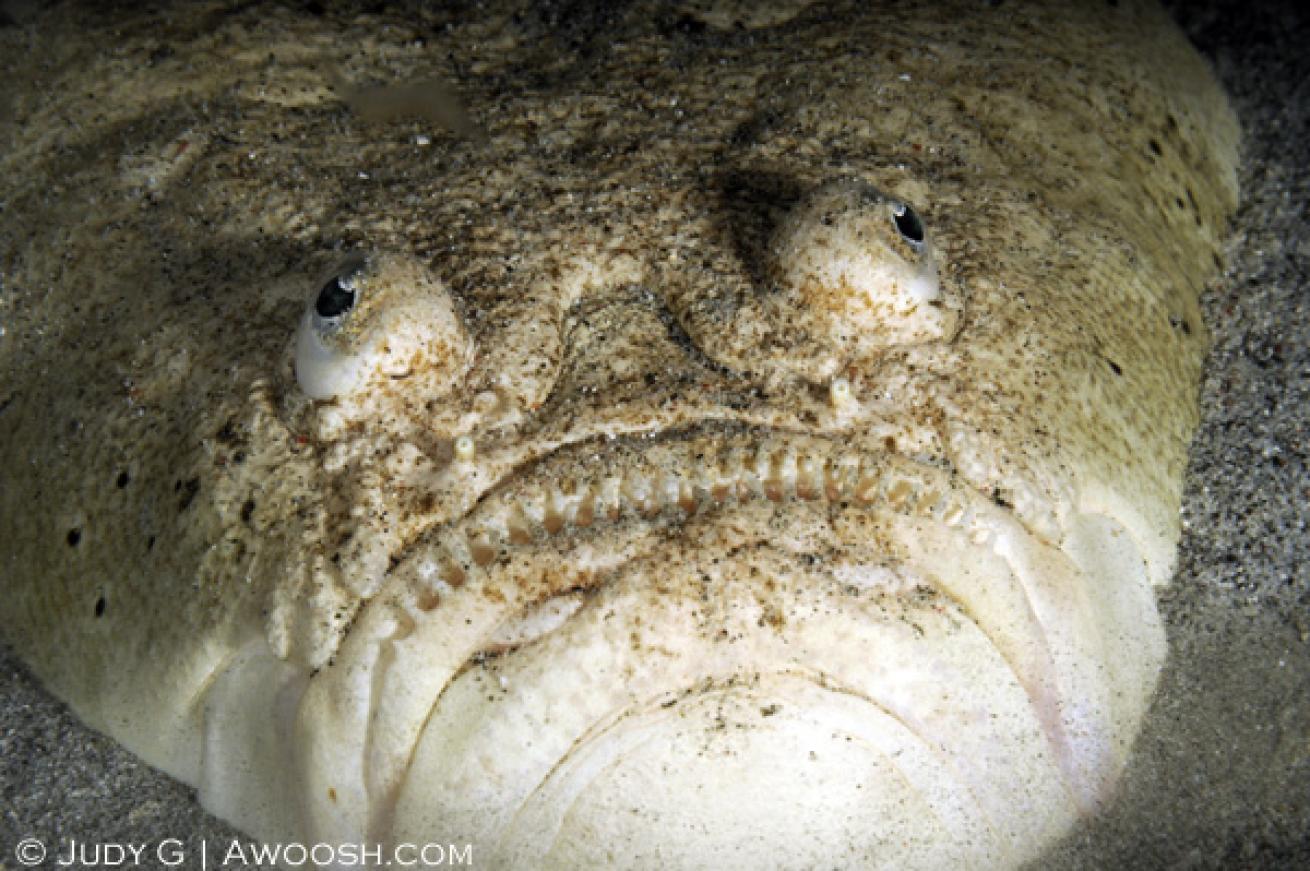
Judy G
Not only is this a “weird” fish, it is also an ugly fish, with its bulbous eyes and scary mouth. This is another ambush predator that burrows down into the sandy bottom, with just its eyes and downturned mouth visible. When a tasty morsel passes over above it, it springs like a trap and grabs its prey. This particular fish had been out of its lair after a strike and was just burrowing down when I captured the shot, so more of the fish is visible than usual. Still, I am not able to determine from this image whether this is a Reticulate Stargazer or a Whitemargin. This fish was about a foot long.
The first time I had the opportunity to dive in Indonesia, I was pretty much gobsmacked by the incredible diversity of creatures that could be seen on every dive — some of which are very bizarre critters indeed.
Indonesia enjoys a very robust (some might even say epic) marine biodiversity. There are far more species of fish, crustaceans, cephalopods, nudibranchs (as well as many other fascinating photo subjects) there than anywhere else in the world where I have been diving.
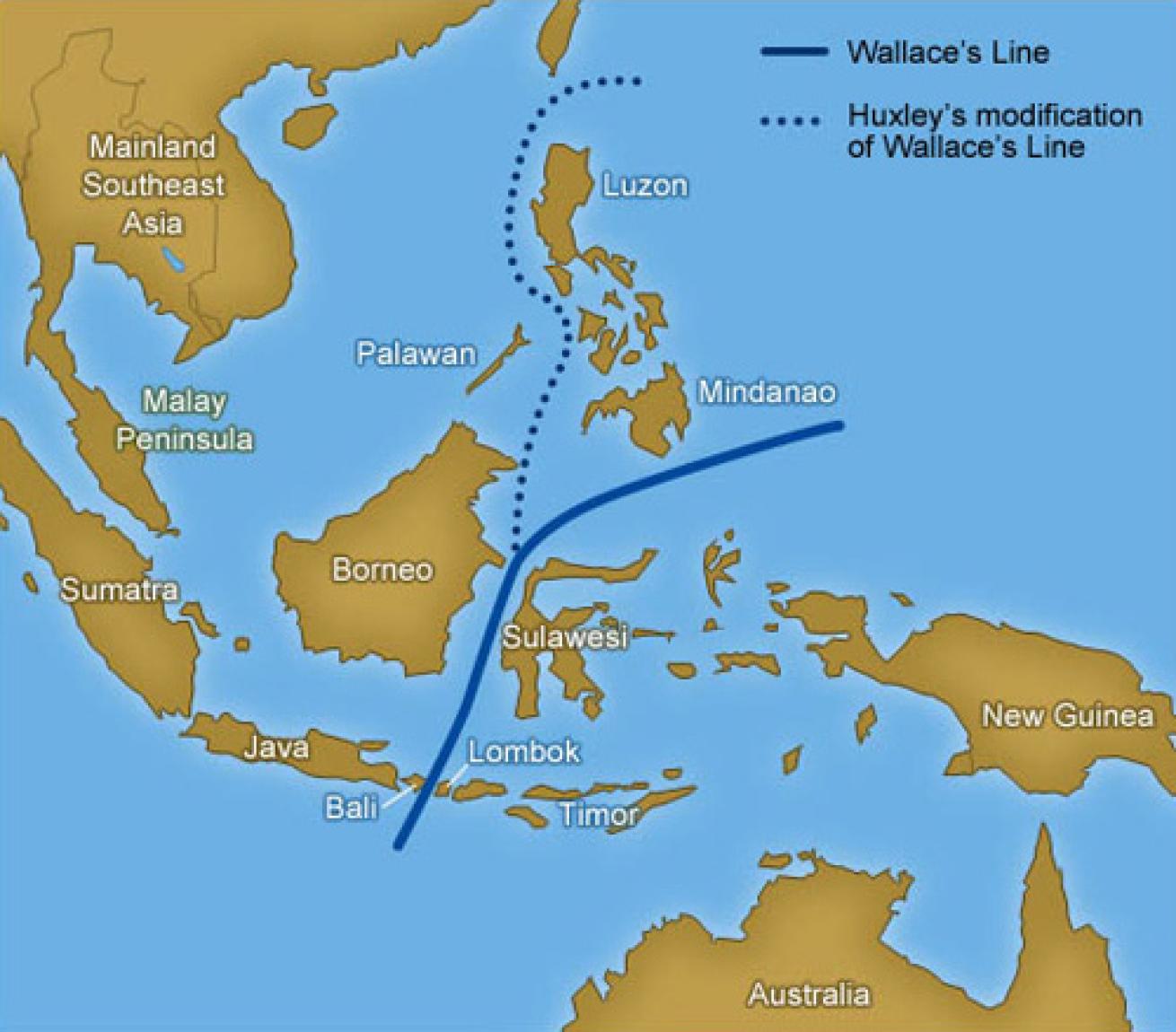
This staggering biodiversity is partially explained by the ‘Wallace Line’ — an imaginary boundary first identified by Alfred Wallace, a British explorer and naturalist, back in the mid 1800s, when any theory of evolution was considered heresy. Like his contemporary, Charles Darwin, Wallace also was fascinated by bio-geography. His line was later adjusted, but still defines an area where different ocean currents (and tectonic plates) meet and produce a massive population of cool stuff.
Dividing Asian and Australian ecosystems, the Wallace Line delineates very different and distinct fauna that exists on either side of it. On land, most species do not cross over the line, but in the ocean, several species have apparently intermingled, and the result is an interesting array of hybrid species.
I hope you enjoy this gallery of weird and wonderful critters. All images were captured in Indonesia — in or near ‘Wallacea’ — Wallace’s bio-geographic zone.
More from Judy G
Meeting Mr. Big | Cold Water Rocks | Critters of Cozumel | Indonesia's Komodo National Park

